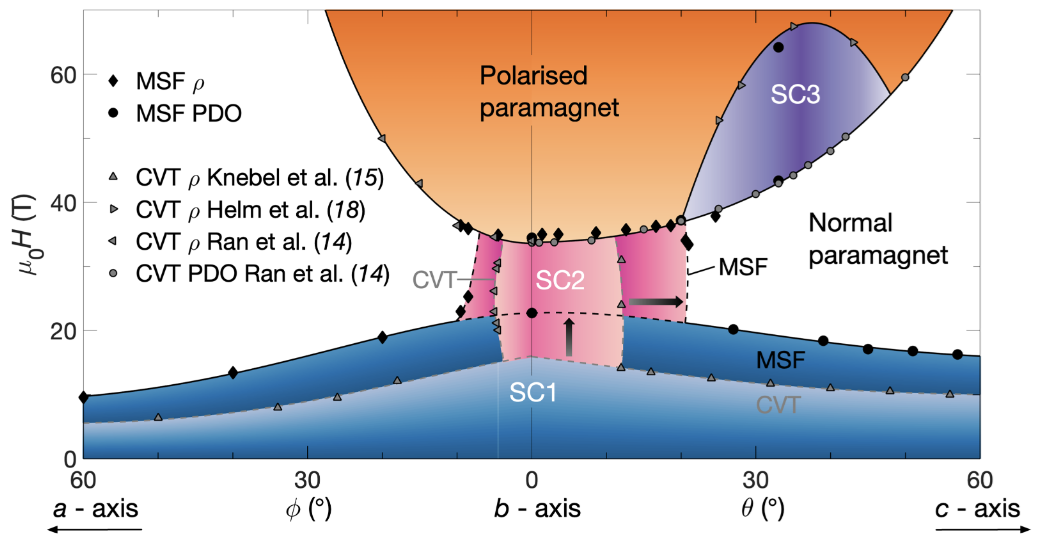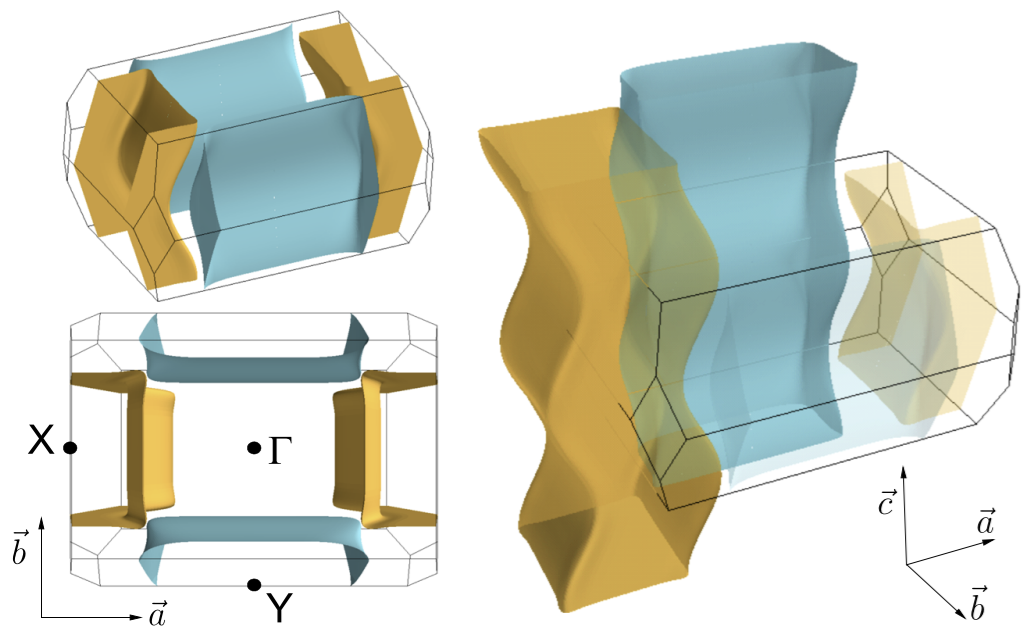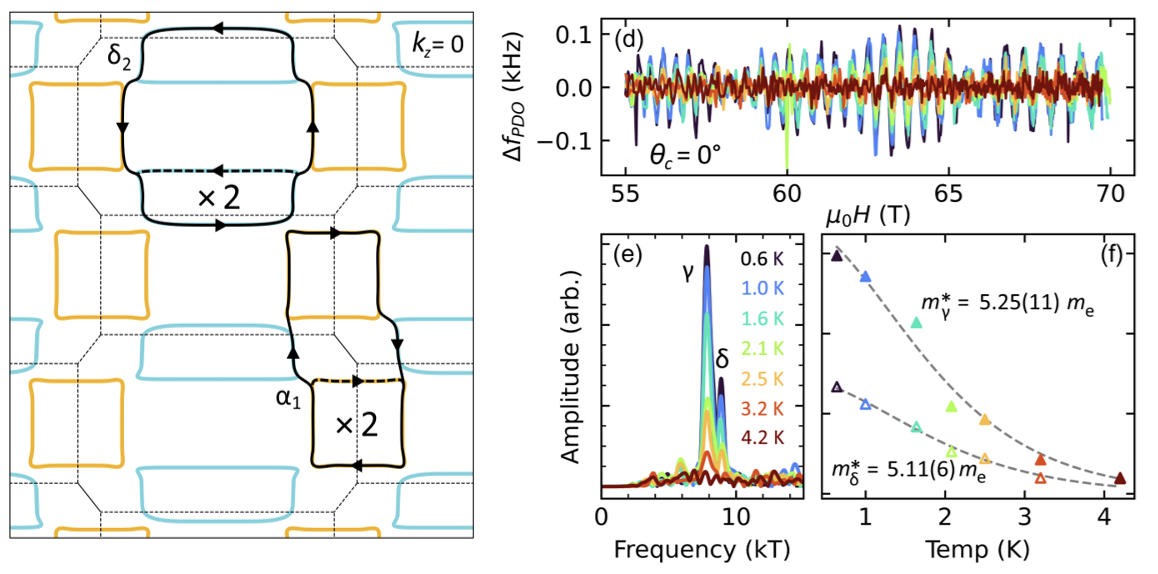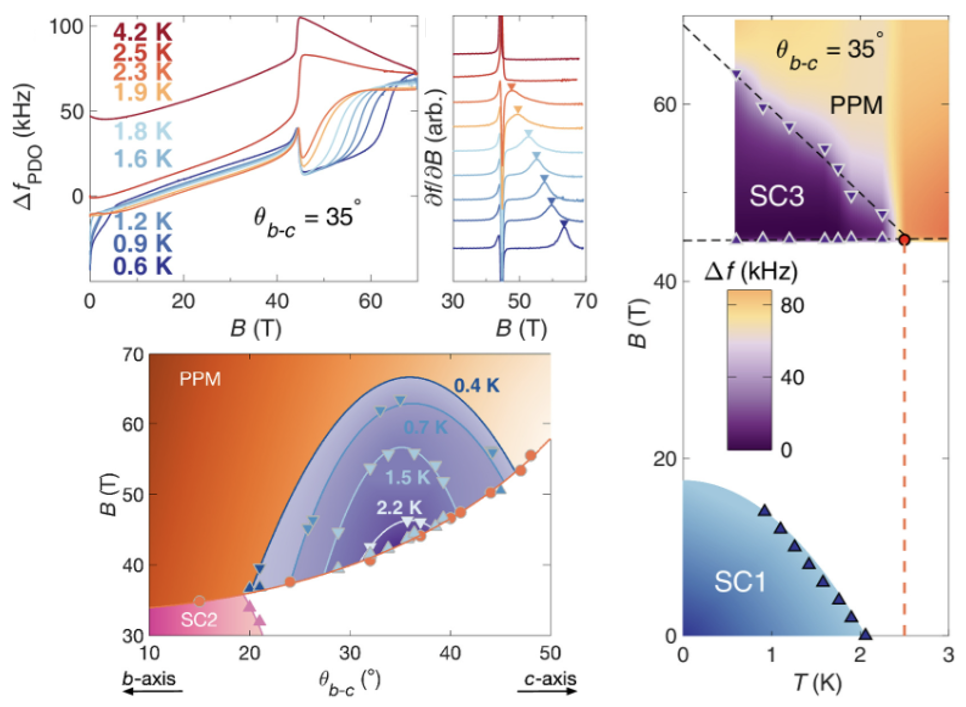Alex is the Ramon Jenkins Research Fellow at Sidney Sussex College.
Email: alex.eaton@phy.cam.ac.uk
My current research focusses predominantly on high magnetic field studies of the spin-triplet superconductor candidate UTe2.
Recent publications:
In collaboration with expert crystal growth partners at Charles University, Prague, we have recently measured the high magnetic field phase landscape of UTe2. Applying magnetic fields to a superconductor generally tends to break apart the electronic pairs that mediate the dissipationless flow of charge. However, magnetic fields can enhance or even induce superconductivity in a very small number of materials in which the electronic spins are aligned parallel to the field in a triplet configuration. UTe2 is remarkable in having two such magnetic field-induced superconducting phases. Our experiments on a new generation of pristine quality samples have revealed an acute sensitivity to disorder for one of these exotic superconducting states, shedding light on the origin of this exotic type of superconductivity.
Reference: Z. Wu et al, PNAS 121 e2403067121 (2024)
Furthermore, access to pristine quality crystals has enabled us to perform quantum oscillation measurements to determine the Fermi surface of this material. The Fermi surface is the electronic fingerprint of a metal, the geometry and dimensionality of which dictates the vast majority of its physical properties. In the case of a triplet superconductor, the difference between 2D or 3D Fermi surface sections can have important implications regarding the topological properties of the superconductivity. Our measurements down to very low temperatures of 0.019 K revealed the quasi-2D nature of the Fermi surface of UTe2, setting strong constraints on the possible symmetry of the superconducting order parameter. The Fermi surface is remarkably simple compared to many other heavy fermion compounds, which gives confidence that accurate microscopic models of this material may soon be attainable.
Reference: A.G. Eaton et al, Nature Communications 15 223 (2024)
When Fermi surface sections lie close to each other in reciprocal space, sufficiently large magnetic fields can induce quantum mechanical tunnelling of charge carriers between separate Fermi sheets. This can give rise to quantum interference oscillations. This effect is phenomenologically akin to other quantum interference phenomena like Young's double slit experiment, but has only been observed in a handful of materials. We observed this exotic quantum mechanical effect in our high magnetic field experiments of UTe2 up to 70 T. These measurements have helped us to refine our model of this material's Fermi surface.
Reference: T.I. Weinberger et al, Phys. Rev. Lett. 132 266503 (2024)
In our recent measurements of magnetic field-induced superconductivity in UTe2 we made the surprising observation that the superconducting critical temperature of this material is higher in magnetic fields > 40 T than it is at ambient magnetic field. This observation points towards the presence of multiple distinct superconductive pairing mechanisms at play in this material.
Reference: Z. Wu et al, PNAS 122 e2422156122 (2025)





